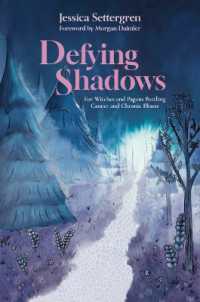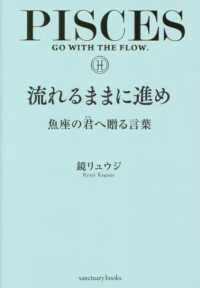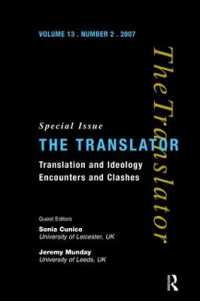Full Description
This classic edition of Mike Fleming's The Art of Drama Teaching provides a multitude of practical ideas for teachers of drama and for those who are interested in using drama to teach other subjects. It takes the form of detailed discussion of twenty-five drama techniques including but not limited to:
beginnings and endings
monologue and narration
off-stage action and reported action
mime
irony
time shifts
minor characters
Each technique, topic or convention is illustrated by a carefully chosen extract from a play and accompanied by a commentary and practical examples of lesson tasks.
This book not only demonstrates drama as an art form and provides ready-to-use material for drama teachers, but highlights how dramatic techniques can be used to inform classroom teaching and develop teacher practice. Featuring a brand new preface by the author to contextualise the book within the field today, this Routledge Classic Edition is an indispensable resource for drama teachers in both primary and secondary schools.
Contents
Introduction to the Classic Edition Acknowledgements Introduction 1. Alternative Perspective (Priestley, An Inspector Calls) 2. Analogy (Brecht, Galileo) 3. Beginnings (Chekhov, Three Sisters) 4. Counterpoint (O'Casey, The Plough and The Stars) 5. Endings (Wertenbaker, Our Country's Good) 6. Exposition (Ibsen, Hedda Gabler) 7. Externalising Inner Conflict (Marlowe, Dr Faustus) 8. False Identity (Rattigan, Separate Tables; Shakespeare, Othello) 9. Framing Action (Miller, The Crucible) 10. Incongruity (Churchill, Top Girls) 11. Irony (Shakespeare, Macbeth) 12. Mime (Shaffer, The Royal Hunt of the Sun) 13. Minimal Context (Beckett, Waiting for Godot) 14. Minor Characters (Stoppard, Rosencrantz and Guildenstern are Dead) 15. Monologue (Bennett, A Chip in the Sugar) 16. Narration (Bolt, A Man for all Seasons) 17. Object Focus (Galsworthy, The Silver Box; Wilde, Lady Windermere's Fan; Shakespeare, Othello) 18. Off-Stage Action (Ayckbourn, Absurd Person Singular) 19. Pause (Pinter, Betrayal) 20. Play Within A Play (Shakespeare, A Midsummer Night's Dream) 21. Reported Action (Sophocles, Oedipus) 22. Ritual (Yeats, On Baile's Strand) 23. Time Shift (Miller, Death of a Salesman) 24. Unspoken Thoughts (Friel, Philadelphia, Here I Come) 25. Voices (Shaffer, Amadeus; Thomas, Under Milk Wood; Shakespeare, King Richard III; Eliot, Murder in the Cathedral)








